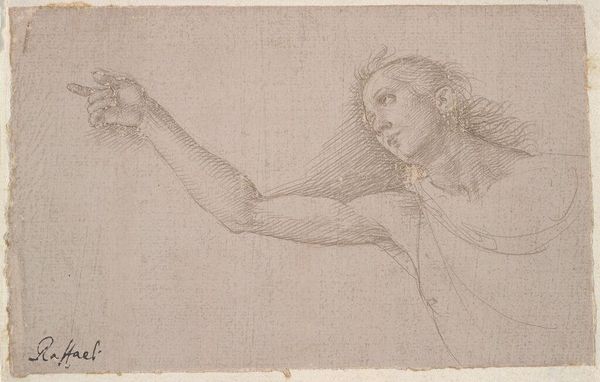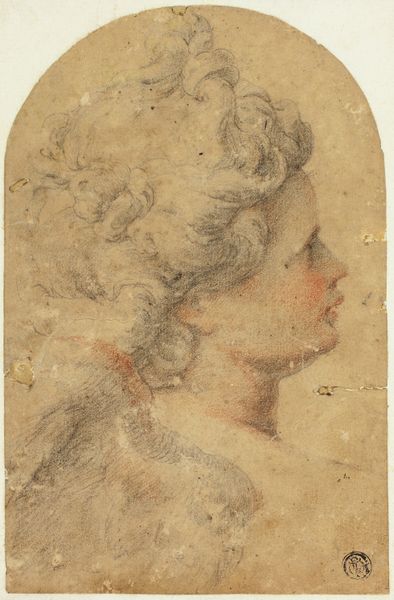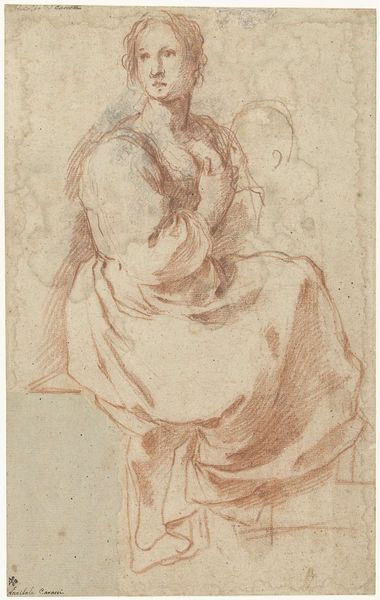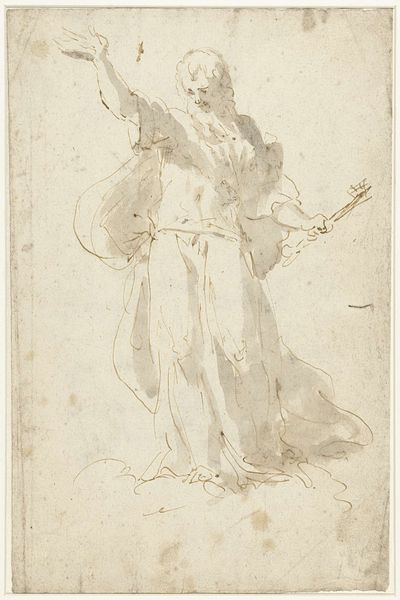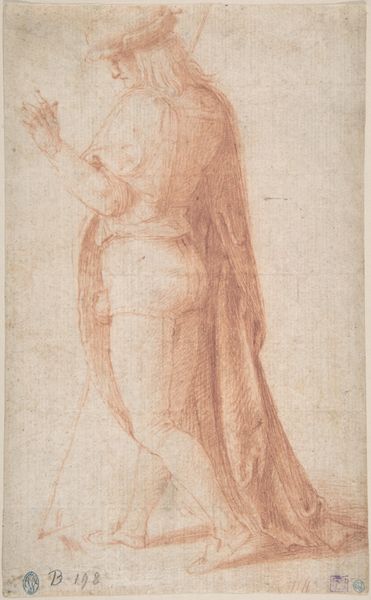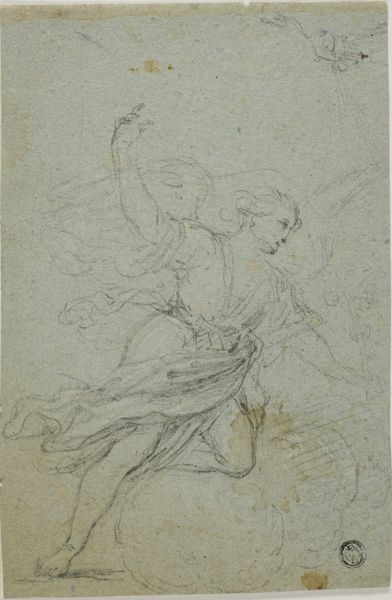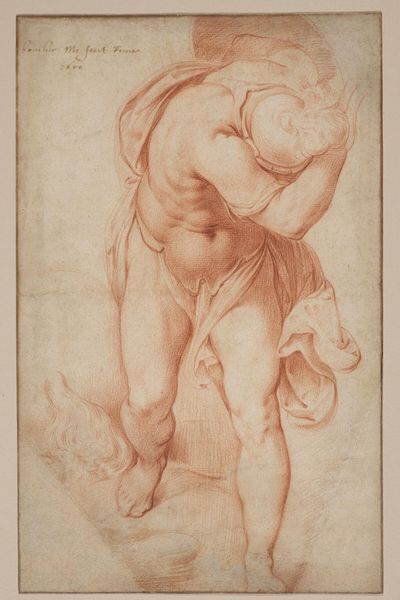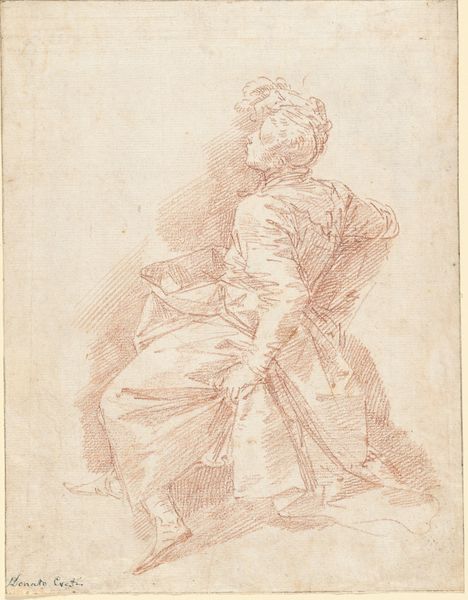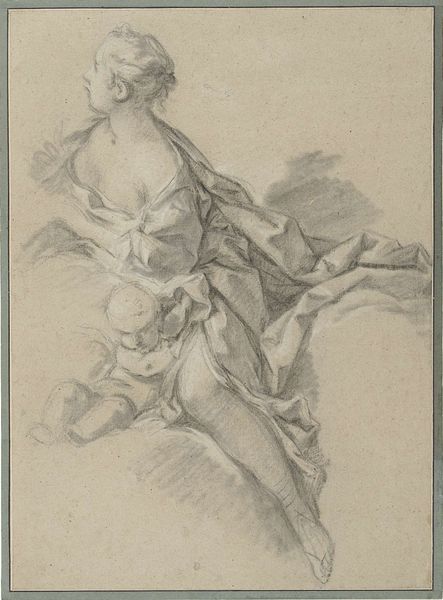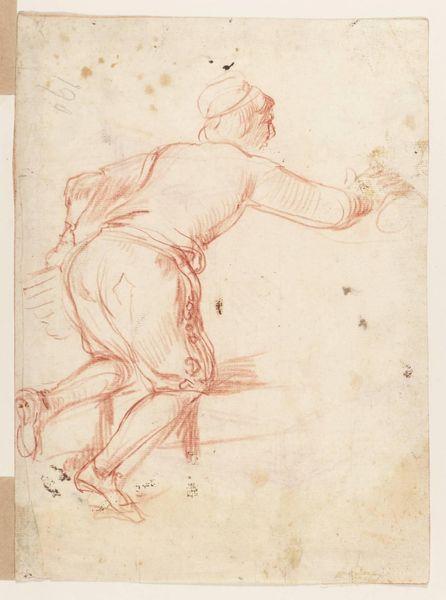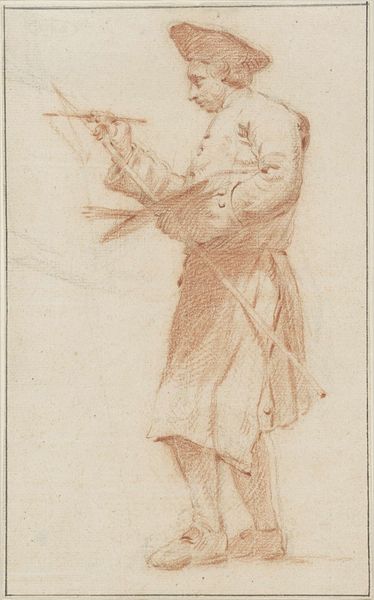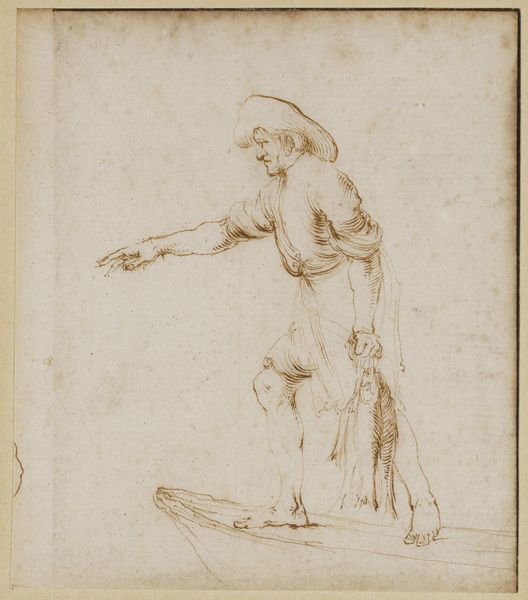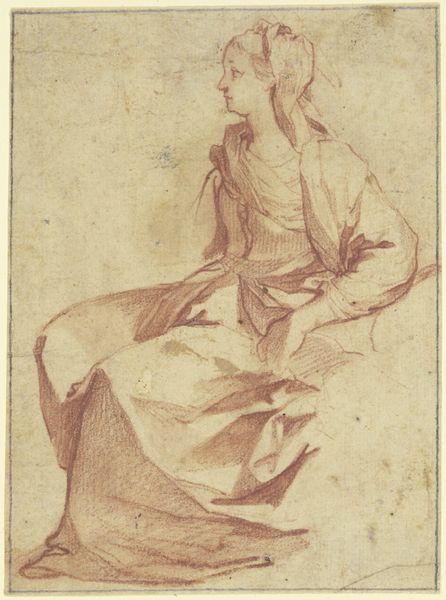
Studieblad met een neerziend meisjeskopje, een gitaar en de handen die ze bespelen 1705 - 1721
0:00
0:00
jeanantoinewatteau
Rijksmuseum
drawing, pencil, charcoal
#
portrait
#
drawing
#
baroque
#
pencil sketch
#
figuration
#
pencil
#
portrait drawing
#
genre-painting
#
charcoal
#
history-painting
#
rococo
Dimensions: height 222 mm, width 165 mm
Copyright: Rijks Museum: Open Domain
Curator: Let’s turn our attention to this drawing by Jean-Antoine Watteau, a study sheet dating from between 1705 and 1721, now residing here at the Rijksmuseum. It's entitled "Study sheet with a down-looking girl's head, a guitar and the hands playing it". Editor: Oh, this feels so tender, so fleeting! It's like catching a glimpse of a secret moment, a quiet interlude. I’m immediately drawn to the delicacy of the lines, the subtle shading. Curator: Indeed. Watteau uses both pencil and charcoal in this study, and the composition speaks volumes about artistic production in that era. These weren't finished pieces meant for immediate display but rather preparatory sketches. They provide us an interesting glimpse into Watteau's process. He was gathering studies of models, carefully observing poses and expressions for use in larger paintings. Editor: It's fascinating to think about this being just one piece of a larger puzzle. This girl with her head tilted, gazing downward... Was she a performer? Lost in her own world as she plays the guitar? I wonder what sort of salon or theatrical piece she might have appeared in. It also says a lot about the working-class artists he probably drew for models and materials. Curator: It's likely that Watteau would sell these individual study sheets later as standalone artworks for collectors. We're seeing both the mechanics of Watteau’s process here but also considering these sketches within an art market increasingly focused on accessibility and commercial circulation. It bridges high art and commerce. Editor: To think these drawings could be studies towards something grander, and be beautiful objects on their own terms! They’ve come to have a separate life that reflects the evolution of art appreciation. Curator: Absolutely. Each line, each smudge, tells a story not just of the figure depicted, but of Watteau’s labour and the artistic practices of the time. The materiality and making. Editor: Seeing art through the lens of labor, as work... It lends another layer of richness to what seems like just an unassuming sketch at first glance. I think I like her even more now. Curator: It challenges our traditional definitions. It humanizes and complicates. Editor: A beautiful intersection of craft and artistry, truly. Thanks for pointing all of that out!
Comments
No comments
Be the first to comment and join the conversation on the ultimate creative platform.
